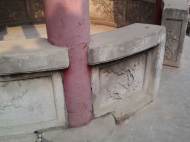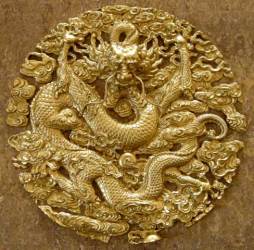Using 3D printing technology to restore China’s artifacts
 In our previous articles we wrote about various 3D printers, whose range of application ranges from printing living tissues, to printing prototypes and chocolate. Funded by the Chinese Government, the designers from the Loughborough University are using the latest 3D digital technologies to restore the former glory of the Palace Museum in Beijing – a place better known as the Forbidden City.
In our previous articles we wrote about various 3D printers, whose range of application ranges from printing living tissues, to printing prototypes and chocolate. Funded by the Chinese Government, the designers from the Loughborough University are using the latest 3D digital technologies to restore the former glory of the Palace Museum in Beijing – a place better known as the Forbidden City.
“This is a good start, and we hope the research on these applications will continue as the prospects are very broad”, said Mr Shiwei Wang, Director of the Ancient Architecture Department in the Palace Museum and member of the China Association for Preservation Technology of Cultural Relics.
This is a huge project that involves thousands of individual historic relics and artifacts. Instead applying conventional methods in restoration, such as measuring, photography and manual techniques for repairs, designers from the Loughborough Design School plan improve this process, while lowering the costs and time needed for it, by using 3D printing and other digital technologies within the sculptural and archaeological restoration fields.
Loughborough Design School PhD student Fangjin Zhang and her colleagues have been investigating the use of this more efficient approach since 2009, and they plan to use laser or optical scanners to record the shape of the original objects and clean up the acquired data by using reverse engineering techniques. Once this process is completed, the data of digitally restored relics and artifacts can be used in the 3D printing process.
Although the mentioned methodology for restoration has been available for a while now, Zhang is developing a formalized approach suitable for the restoration of historic artifacts. The process has already been applied to a range of objects from the Forbidden City and elsewhere.
Following recent visits to the museum where Zhang has been able to explain and illustrate the many uses and benefits of 3D printing, Loughborough University has now been asked use this technique to repair several specific artifacts, including the ceiling and enclosure of a pavilion in the Emperor Chanlong Garden.
“We are delighted to be working with the museum, using this very modern and innovative technique to restore and safeguard some of China’s most important artefacts. There is real scope for this technique to be used in museums across the world”, said Dr Ian Campbell, Loughborough Design School’s professor who is supervising the research.










Leave your response!